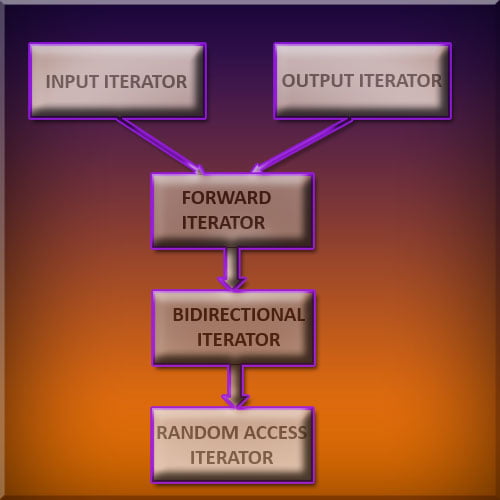Physical Address
304 North Cardinal St.
Dorchester Center, MA 02124
Physical Address
304 North Cardinal St.
Dorchester Center, MA 02124
In this tutorial, you will learn the implementation of the C++ iterators with an example. An iterator is an object that shows an element inside the container. You can use iterators to pass through the contents of the container. They can be view something similar to a pointer passing to some location. You can access the content at that particular location using iterators.
They play a critical role in connecting algorithms with containers along with the direction of data stored inside the containers. The common obvious form of the iterator is a pointer. A pointer can point to the elements in an array and can create iterations through them using the increment operator (++). But, they do not have similar functionality as that of pointers.
#include <iostream>
#include<vector>
#include<iterator>
using namespace std;
int main()
{
//Here we Declaring a Vector
vector<int> v{1,2,3,4,5,6,7,8};
//Here we Declaring Iterator
vector<int>::iterator i;
//Here we use a Function
v.insert(v.begin()+1,10);
for(i=v.begin();i!=v.end();i++) {
cout << *i <<" ";
}
return 0;
}There are five different types of Iterators that can be classified depending on the type of functionality as shown in the flowchart below:

If you want to go from one element which iterator is currently pointing to another element that is probably y steps away from your current iterator. So, the first four in the hierarchy will get a linear value of time to make that while a random path iterator can do that in even time and that is way more interesting because that’s where time is saved. It is the most valuable feature which an Iterator provides.
You can not go from one data structure to another at an equal time in some hidden way. Iterator won’t run in that case. If you are processing by a list and you forgot something. So, now if you want to go back then you can’t do that because iterators won’t work in that way. In case you want to renew the structure while traversing, you can’t do that too because of the iterative way of storing its position.